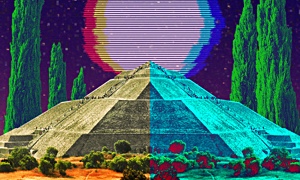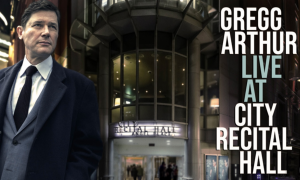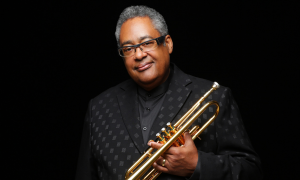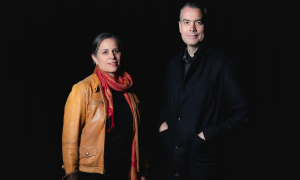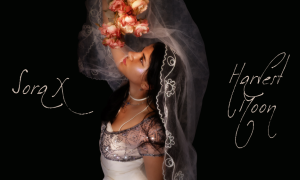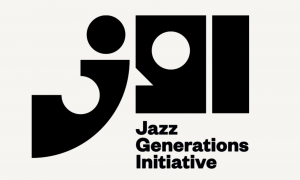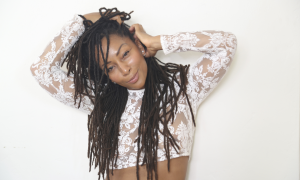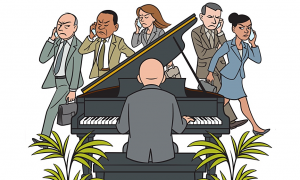
Dizzy Gillespie, the trumpet player whose role as a founding father of modern jazz made him a major figure in 20th-century American music and whose signature moon cheeks and bent trumpet made him one of the world's most instantly recognizable figures, died yesterday (January 7, 1993) at Englewood Hospital in Englewood, N.J.
Mr. Gillespie, who was 75, had been suffering for some time from pancreatic cancer, his press agent, Virginia Wicks, said.
In a nearly 60-year career as a composer, band leader and innovative player, Mr. Gillespie cut a huge swath through the jazz world. In the early 40's, along with the alto saxophonist Charlie (Yardbird) Parker, he initiated be-bop, the sleek, intense, high-speed revolution that has become jazz's most enduring style. In subsequent years he incorporated Afro-Cuban music into jazz, creating a new genre from the combination.
In the naturally effervescent Mr. Gillespie, opposites existed. His playing -- and he performed constantly until nearly the end of his life -- was meteoric, full of virtuosic invention and deadly serious. But with his endlessly funny asides, his huge variety of facial expressions and his natural comic gifts, he was as much a pure entertainer as an accomplished artist. In some ways, he seemed to sum up all the possibilities of American popular art.
From Carolina To the Big Bands
John Birks Gillespie was born in Cheraw, S.C., on Oct. 21, 1917. His father, a bricklayer, led a local band, and by the age of 14 the young Gillespie was practicing the trumpet. He and his family moved to Philadelphia two years later, and Mr. Gillespie, though he thought about entering Temple University, quickly began a succession of professional jobs.
He worked with Bill Doggett, the pianist and organist, who fired him for not being able to read music well enough, and then Frank Fairfax, a big-band leader whose orchestra included the trumpeter Charlie Shavers and the clarinetist Jimmy Hamilton. Mr. Gillespie was listening to the trumpeter Roy Eldridge, copying his solos and emulating his style, and was soon performing with Teddy Hill's band at the Savoy Ballroom on the basis of his ability to reproduce Mr. Eldridge's style.
According to legend, it was Mr. Hill who gave Mr. Gillespie his nickname because of his odd clothing style and his fondness for practical jokes. Mr. Gillespie began cultivating his personality, putting his feet up on music stands during shows and regularly cracking jokes. But by May 1937 he was also recording improvisations with the Hill band and helping the performances by setting riffs behind soloists.
Two years later, Mr. Gillepsie was considered accomplished enough to take part in a series of all-star recordings with Lionel Hampton, Benny Carter, Coleman Hawkins, Ben Webster and Chu Berry. He soloed on “Hot Mallets."
That year, 1939, he joined Cab Calloway's band, one of the leading black orchestras of the era. Though a dance band, its musicians, who included the bassist Milt Hinton and the guitarist Danny Barker, liked to experiment. Mr. Gillespie would work on the harmonic substitutions that eventually became be-bop. Mr. Gillespie was a regular soloist with the band, and by then his harmonic sensibility was beginning to take shape.
Joining With Parker To Mold New Style
It was while touring with the Calloway band in 1940 that Mr. Gillespie met Charlie Parker in Kansas City. And it was with him that Mr. Gillespie began formulating the style that was eventually called be-bop. Along with a handful of other musicians, including Thelonious Monk and Kenny Clarke, Mr. Gillespie and Mr. Parker would regularly experiment.
On live recordings of the period, especially the two solos on the tune “Kerouac," recorded in 1941 at Minton's Uptown Playhouse, a club in Harlem, can be heard his increasing interest in harmony, sleeker rhythms and a divergence from the style of Mr. Eldridge. Mr. Gillespie was blunt about his relationship with Mr. Parker, calling him “the other side of my heartbeat," and freely giving him credit for some of the rhythmic innovations of be-bop.
At the same time that Mr. Gillespie was experimenting with the new style, he was regularly arranging and recording for Mr. Calloway, including one of his better improvisations on “Pickin' the Cabbage," a piece he composed and arranged. In September 1941, at the State Theater in Hartford, Mr. Gillespie was involved in an incident that shaped his reputation and his career. Mr. Calloway saw a spitball thrown on stage and thought Mr. Gillespie had done it; the two men fought, and Mr. Gillespie pulled a knife and put a cut in Mr. Calloway's posterior that required 10 stitches to close.
Mr. Gillespie was fired from that job, but spent the next several years working with some of the biggest names in jazz, including Coleman Hawkins (who recorded the first version of Mr. Gillespie's classic “Woody 'N' You"), Benny Carter, Les Hite (for whom he recorded “Jersey Bounce," considered the first be-bop solo), Lucky Millinder, Earl Hines, Ella Fitzgerald and Duke Ellington. For Mr. Millinder he made “Little John Special," which includes a riff of Mr. Gillespie's that was later fleshed out into the composition “Salt Peanuts," one of his best-known pieces.
The early 40's were a turbulent time for jazz. Be-bop was slowly making itself felt, but at the same time a series of disputes between recording companies and the musicians' union resulted in a recording ban, so Mr. Gillespie and Mr. Parker were rarely recorded. In 1943 Mr. Gillespie led a band with the be-bop bassist Oscar Pettiford at the Onyx Club on 52d Street in Manhattan. And in 1944, the singer Billy Eckstine took over part of the Earl Hines band and created the first be-bop orchestra, of which few recorded performaces exist. Mr. Gillespie was the music director, and the band featured his “Night in Tunisia."
It was in 1945 that Mr. Gillespie began to break out. He undertook an ambitious recording schedule, recording with the pianist Clyde Hart and with Mr. Parker, Cootie Williams, Red Norvo, Sarah Vaughan and Slim Gaillard. And he began series of his own recordings that have since become some of jazz's most important pieces.
Recording under his own name for the first time, he made “I Can't Get Started," “Good Bait," “Salt Peanuts" and “Be-bop," during one session in January 1945. He followed it up with a recording date featuring Mr. Parker that included “Groovin' High," “Dizzy Atmosphere" and “All the Things You Are."
These recordings, with their tight ensemble passages, precisely articulated rhythms and dissonance as part of the palate of jazz, were to influence jazz forever. Though Mr. Gillespie enjoyed playing for dancers, this was music that was meant first and foremost to be listened to. It was virtuosic in a way not heard before, and it was music that sent music students scurrying to their turntables to learn the improvisations by heart.
Mr. Gillespie, who was 75, had been suffering for some time from pancreatic cancer, his press agent, Virginia Wicks, said.
In a nearly 60-year career as a composer, band leader and innovative player, Mr. Gillespie cut a huge swath through the jazz world. In the early 40's, along with the alto saxophonist Charlie (Yardbird) Parker, he initiated be-bop, the sleek, intense, high-speed revolution that has become jazz's most enduring style. In subsequent years he incorporated Afro-Cuban music into jazz, creating a new genre from the combination.
In the naturally effervescent Mr. Gillespie, opposites existed. His playing -- and he performed constantly until nearly the end of his life -- was meteoric, full of virtuosic invention and deadly serious. But with his endlessly funny asides, his huge variety of facial expressions and his natural comic gifts, he was as much a pure entertainer as an accomplished artist. In some ways, he seemed to sum up all the possibilities of American popular art.
From Carolina To the Big Bands
John Birks Gillespie was born in Cheraw, S.C., on Oct. 21, 1917. His father, a bricklayer, led a local band, and by the age of 14 the young Gillespie was practicing the trumpet. He and his family moved to Philadelphia two years later, and Mr. Gillespie, though he thought about entering Temple University, quickly began a succession of professional jobs.
He worked with Bill Doggett, the pianist and organist, who fired him for not being able to read music well enough, and then Frank Fairfax, a big-band leader whose orchestra included the trumpeter Charlie Shavers and the clarinetist Jimmy Hamilton. Mr. Gillespie was listening to the trumpeter Roy Eldridge, copying his solos and emulating his style, and was soon performing with Teddy Hill's band at the Savoy Ballroom on the basis of his ability to reproduce Mr. Eldridge's style.
According to legend, it was Mr. Hill who gave Mr. Gillespie his nickname because of his odd clothing style and his fondness for practical jokes. Mr. Gillespie began cultivating his personality, putting his feet up on music stands during shows and regularly cracking jokes. But by May 1937 he was also recording improvisations with the Hill band and helping the performances by setting riffs behind soloists.
Two years later, Mr. Gillepsie was considered accomplished enough to take part in a series of all-star recordings with Lionel Hampton, Benny Carter, Coleman Hawkins, Ben Webster and Chu Berry. He soloed on “Hot Mallets."
That year, 1939, he joined Cab Calloway's band, one of the leading black orchestras of the era. Though a dance band, its musicians, who included the bassist Milt Hinton and the guitarist Danny Barker, liked to experiment. Mr. Gillespie would work on the harmonic substitutions that eventually became be-bop. Mr. Gillespie was a regular soloist with the band, and by then his harmonic sensibility was beginning to take shape.
Joining With Parker To Mold New Style
It was while touring with the Calloway band in 1940 that Mr. Gillespie met Charlie Parker in Kansas City. And it was with him that Mr. Gillespie began formulating the style that was eventually called be-bop. Along with a handful of other musicians, including Thelonious Monk and Kenny Clarke, Mr. Gillespie and Mr. Parker would regularly experiment.
On live recordings of the period, especially the two solos on the tune “Kerouac," recorded in 1941 at Minton's Uptown Playhouse, a club in Harlem, can be heard his increasing interest in harmony, sleeker rhythms and a divergence from the style of Mr. Eldridge. Mr. Gillespie was blunt about his relationship with Mr. Parker, calling him “the other side of my heartbeat," and freely giving him credit for some of the rhythmic innovations of be-bop.
At the same time that Mr. Gillespie was experimenting with the new style, he was regularly arranging and recording for Mr. Calloway, including one of his better improvisations on “Pickin' the Cabbage," a piece he composed and arranged. In September 1941, at the State Theater in Hartford, Mr. Gillespie was involved in an incident that shaped his reputation and his career. Mr. Calloway saw a spitball thrown on stage and thought Mr. Gillespie had done it; the two men fought, and Mr. Gillespie pulled a knife and put a cut in Mr. Calloway's posterior that required 10 stitches to close.
Mr. Gillespie was fired from that job, but spent the next several years working with some of the biggest names in jazz, including Coleman Hawkins (who recorded the first version of Mr. Gillespie's classic “Woody 'N' You"), Benny Carter, Les Hite (for whom he recorded “Jersey Bounce," considered the first be-bop solo), Lucky Millinder, Earl Hines, Ella Fitzgerald and Duke Ellington. For Mr. Millinder he made “Little John Special," which includes a riff of Mr. Gillespie's that was later fleshed out into the composition “Salt Peanuts," one of his best-known pieces.
The early 40's were a turbulent time for jazz. Be-bop was slowly making itself felt, but at the same time a series of disputes between recording companies and the musicians' union resulted in a recording ban, so Mr. Gillespie and Mr. Parker were rarely recorded. In 1943 Mr. Gillespie led a band with the be-bop bassist Oscar Pettiford at the Onyx Club on 52d Street in Manhattan. And in 1944, the singer Billy Eckstine took over part of the Earl Hines band and created the first be-bop orchestra, of which few recorded performaces exist. Mr. Gillespie was the music director, and the band featured his “Night in Tunisia."
It was in 1945 that Mr. Gillespie began to break out. He undertook an ambitious recording schedule, recording with the pianist Clyde Hart and with Mr. Parker, Cootie Williams, Red Norvo, Sarah Vaughan and Slim Gaillard. And he began series of his own recordings that have since become some of jazz's most important pieces.
Recording under his own name for the first time, he made “I Can't Get Started," “Good Bait," “Salt Peanuts" and “Be-bop," during one session in January 1945. He followed it up with a recording date featuring Mr. Parker that included “Groovin' High," “Dizzy Atmosphere" and “All the Things You Are."
These recordings, with their tight ensemble passages, precisely articulated rhythms and dissonance as part of the palate of jazz, were to influence jazz forever. Though Mr. Gillespie enjoyed playing for dancers, this was music that was meant first and foremost to be listened to. It was virtuosic in a way not heard before, and it was music that sent music students scurrying to their turntables to learn the improvisations by heart.















